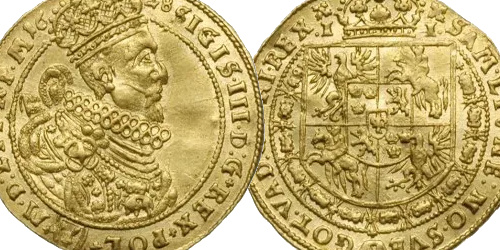Bernt Notke
Lassan c. 1435 – 1509 Lübeck, workshop
Masterful sculpture of St. John
Around 1480
Oak wood
Height 90 cm
This masterly figure of Saint John is evidence of an exceptionally high carving quality. The elongated proportions in the conception of the male figure are striking, coupled with a rounded, youthful face. The long, vestment-like upper garment falls to just below the elbows and knees, and reveals a sleeve-length and floor-length lower garment. The almost mannerist hands with elongated and splayed fingers show a playful execution of gesture. The right hand is stretched boldly to the side, while the saint presents a codex to the viewer with his left hand. This is most probably the Holy Scripture.
The upper robe is characterised by flat planes with only a handful of folds; the long lower robe, on the other hand, meets the ground surface in multi-part, doughy folds. The timeless elegance of the figure is further expressed in the calm, serene face of John. This is framed by the carefully executed curls that fall down the saint's neck. His flat face shows large eyes with heavily drooping eyelids, a short nose, and a slightly smiling mouth with dimples. This idealised face with finely carved locks of hair is comparable to the works of Bernt Notke, the so-called "Donatello of the North". Notke is regarded as probably the most important late Gothic painter in Northern Europe at the end of the Middle Ages and at the beginning of the Early Modern Period. He was mainly active in Lübeck; his workshop produced numerous carvings that are extremely similar to the Saint John presented here. Especially the elongated proportions, the oblong-oval face, the accentuated eyelids, and the extraordinary hairstyle allow its attribution of the work to Notke's workshop. This is evident, for example, in the draperies of the "Danse Macabre", which Notke created at the end of the 15th century for St Nicholas Church in Tallinn, Estonia. Among other aspects, the long, straight folds of the coat, the zigzag folds of the bulging sleeves, the turned-up fabric above the knee, and the triangular seam endings resting complexly on the ground show great affinity to Notke's pictorial works. There are further striking similarities with sculptural works from Notke's workshop, for example with a head of Saint John from 1480-90, which is now in a private collection. The elongated curls of hair, which are arranged in organic volute-shaped spirals, are also comparable to those of the Christ of the Triumphal Cross in Lübeck Cathedral from c. 1470-78. The densely packed curls and the naturalistic-looking tangle of finely executed strands of hair are typical features of Notke's workshop.
Literature:
Eike Oellermann, Karlheinz Stoll und Ewald Vetter, Triumphkreuz im Dom zu Lübeck: Ein Meisterwerk Bernt Notkes, Wiesbaden 1990.
Walter Paatz, Bernt Notke, Vienna 1944.
Kerstin Petermann, Bernt Notke. Arbeitsweise und Werkstattorganisation im späten Mittelalter, Berlin 2000.



























